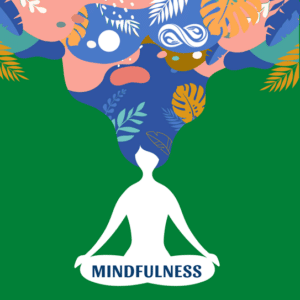At Healing Hands we offer corporate wellness classes for mindfulness. The practice of mindfulness has grown in popularity due to the pandemic, but many people still aren’t exactly sure what mindfulness is, how to develop the practice outside the usual spaces of meditation or yoga, and how to apply and practice mindfulness every day while living a busy modern lifestyle.
Read on to find out the answer to these questions and how you can start developing mindfulness skills today.

What IS mindfulness, anyway?
Another word for mindfulness is awareness. It is simply paying attention to the present moment, without judgment. In other words, being aware of what you’re doing while you’re doing it and not letting your mind think about the past or worry about the future.
Does mindfulness have benefits?
Yes! Mindfulness provides a wealth of benefits, including:
- Increasing levels of attention and concentration
- Improving physical and mental health
- Decreasing levels of stress and anxiety
- Providing emotional stability and well-being
- Calming the nervous system
- Reducing negative thoughts and emotions
- Increasing appreciation of the present moment
- Developing creative thinking
- Reducing emotional exhaustion
- Lessening symptoms of anxiety
A regular mindfulness practice has also shown positive results in building and strengthening relationships and provides a conduit for more thoughtful and open communication in general. In both personal and professional aspects, those who practice mindfulness become better listeners, have fewer arguments, and build healthier relationships. Read more benefits here.

How long should it take to have an effective mindfulness session?
One of the many misconceptions about mindfulness is that people think you have to become a Buddhist monk, leave all your earthy possessions behind, and sit in full lotus under a tree for years in order to be mindful. Nothing could be further from the truth! Mindfulness can be as simple as taking a few deep, focused breaths while waiting in line at the grocery store. Like any practice, it’s better to do short sessions on a regular basis as opposed to occasional long sessions. Consistent practice, however brief, will help you develop your “awareness muscles” and become more tuned in to the things around you. By becoming more aware, you will also become more likely to think before reacting.
Mindfulness outside of meditation
Who says mindfulness has to be boring? If you’re looking for some fun and engaging mindfulness exercises to try without practicing a meditation session, here are a few to get you started.
First, try listening carefully. Next time you’re in a conversation, really tune in to what the other person is saying. Listen with your whole body and don’t let your mind wander. Keeping your attention focused can be challenging, but it’s a good way to practice mindfulness.
Another fun exercise is mindful walking. Instead of letting your mind drift as you walk, pay attention to the sensations of your feet hitting the ground and the feeling of the air on your skin.
You can also try mindful observation, in which you take a few minutes to observe your surroundings and notice small details.
These are just a few of the many mindfulness exercises you can try. If you are looking for guided support, check out some mindfulness apps like Headspace, or Calm.
Hopefully you try the exercises we offer above, and add some mindfulness to your daily life!
Check out this 3-minute explanation of a mindfulness practice from our practitioner Joe:
